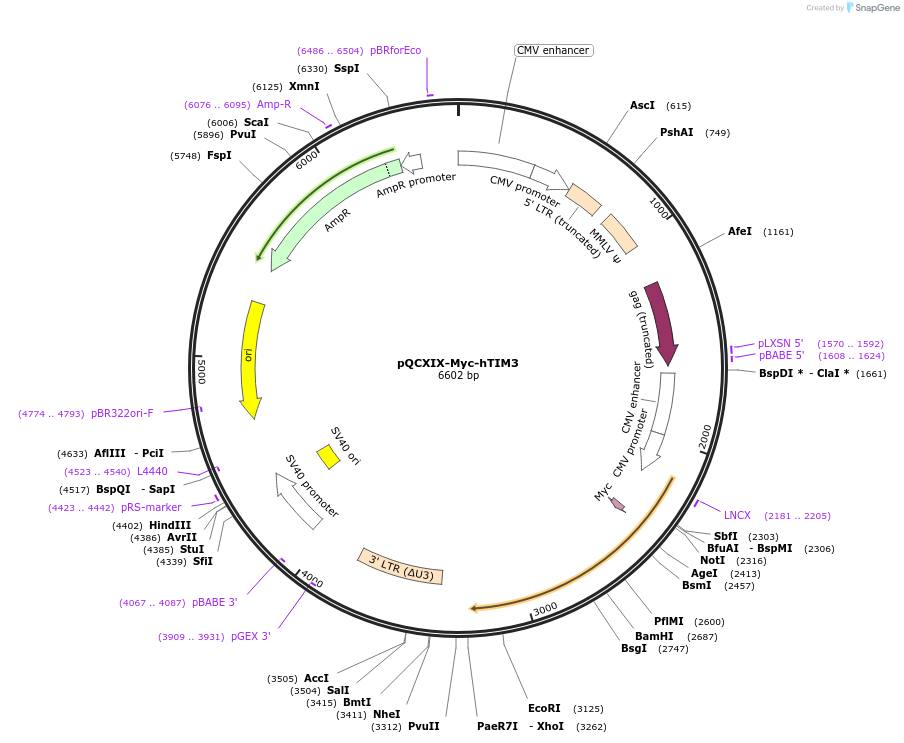pQCXIX-Myc-hTIM3
(Plasmid
#110893)
-
PurposeExpression of Myc-tagged hTIM3 at the cell surface
-
Depositing Lab
-
Sequence Information
Ordering
| Item | Catalog # | Description | Quantity | Price (USD) | |
|---|---|---|---|---|---|
| Plasmid | 110893 | Standard format: Plasmid sent in bacteria as agar stab | 1 | $89 | |
Backbone
-
Vector backbonepQCXIX
-
Backbone manufacturerBD Biosciences
-
Vector typeRetroviral
Growth in Bacteria
-
Bacterial Resistance(s)Ampicillin, 100 μg/mL
-
Growth Temperature37°C
-
Growth Strain(s)NEB Stable
-
Copy numberLow Copy
Gene/Insert
-
Gene/Insert nameHepatitis A virus Cellular Receptor 2 (HAVCR2)
-
Alt nameT-Cell Immunoglobulin and Mucin Domain 3 (TIM3)
-
SpeciesH. sapiens (human)
-
Insert Size (bp)930
-
Entrez GeneHAVCR2 (a.k.a. CD366, HAVcr-2, KIM-3, SPTCL, TIM3, TIMD-3, TIMD3, Tim-3)
- Promoter CMV
-
Tag
/ Fusion Protein
- Myc (N terminal on insert)
Cloning Information
- Cloning method Restriction Enzyme
- 5′ cloning site NotI or AgeI (unknown if destroyed)
- 3′ cloning site XhoI (unknown if destroyed)
Resource Information
-
Article Citing this Plasmid
Terms and Licenses
-
Academic/Nonprofit Terms
-
Industry Terms
- Not Available to Industry
Trademarks:
- Zeocin® is an InvivoGen trademark.
Depositor Comments
Best if grown with in the presence of chloramphenicol
These plasmids were created by your colleagues. Please acknowledge the Principal Investigator, cite the article in which the plasmids were described, and include Addgene in the Materials and Methods of your future publications.
-
For your Materials & Methods section:
pQCXIX-Myc-hTIM3 was a gift from Hyeryun Choe (Addgene plasmid # 110893 ; http://n2t.net/addgene:110893 ; RRID:Addgene_110893) -
For your References section:
TIM-family proteins promote infection of multiple enveloped viruses through virion-associated phosphatidylserine. Jemielity S, Wang JJ, Chan YK, Ahmed AA, Li W, Monahan S, Bu X, Farzan M, Freeman GJ, Umetsu DT, Dekruyff RH, Choe H. PLoS Pathog. 2013 Mar;9(3):e1003232. doi: 10.1371/journal.ppat.1003232. Epub 2013 Mar 28. 10.1371/journal.ppat.1003232 PubMed 23555248



